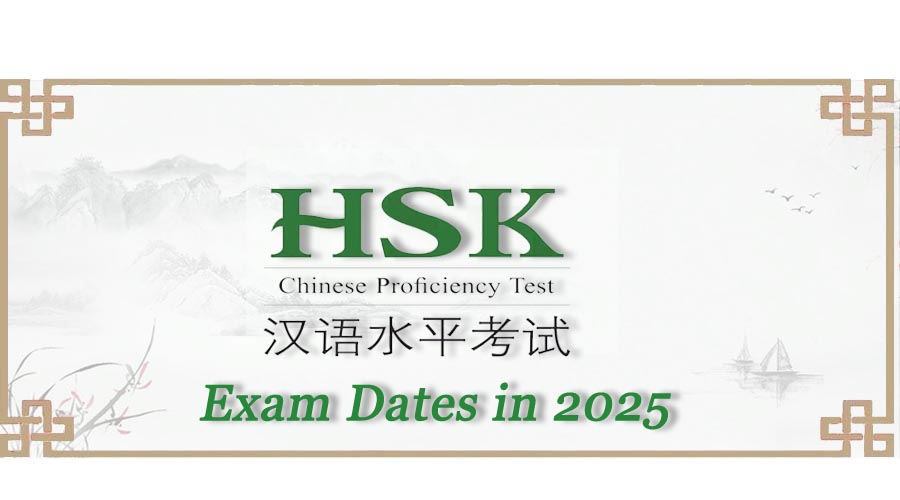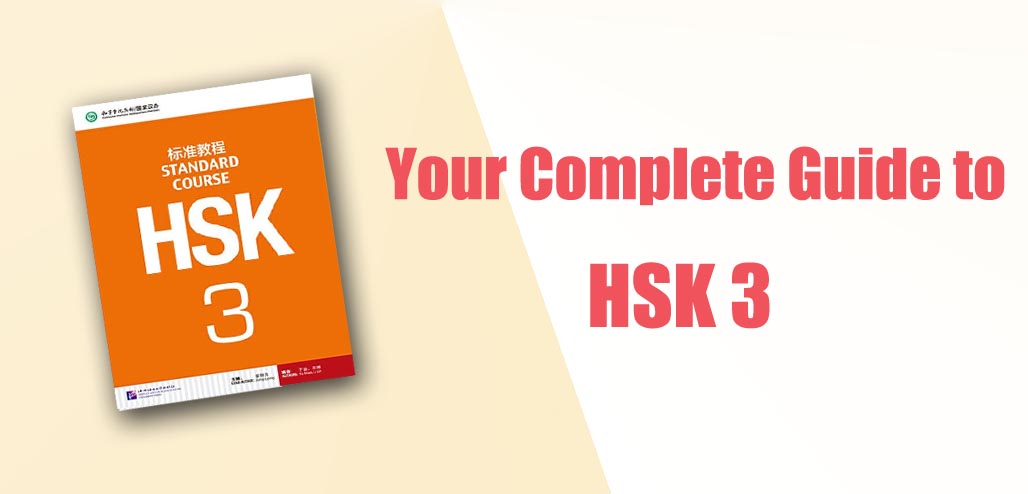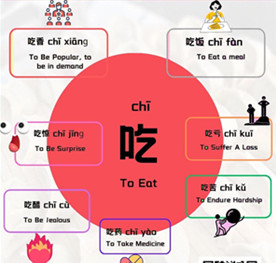HSK 3 Grammar Explained: 12 Key Points to Boost Your Chinese Skills
- Expressing Sequence of Actions: 先…再… / 一边…一边…
- Contrast and Progression: 虽然…但是… / 不但…而且…
- Expressing Comparatives: 比 / 没有
- Ba and Bei Sentences: Highlighting the Object of an Action
- Expressing Verb Tenses: 了 / 过
- Degree Adverbs: 太…了 / 更 / 最
- Directional Complements: 上、下、进、出、回、过、起
- Interrogative Sentences: Yes-No Questions / Special Questions
- Expressing Possibility: 能 / 可以 / 会
- Serial Verb Construction: One Subject, Two Actions
- Cause and Hypothesis: 因为…所以… / 如果…就…
- Common Adverbs: 已经 / 还
- Comparison of Key Grammar Points with Examples
- Free HSK 3 Grammar Quiz
HSK (Hanyu Shuiping Kaoshi) is an exam designed for non-native Chinese speakers to assess their proficiency in the Chinese language. HSK Level 3 corresponds to a lower-intermediate level, requiring learners to master 600 vocabulary words and related grammar knowledge. By studying the grammar points of HSK Level 3, you will be able to handle daily conversations and express yourself more fluently. This article provides a detailed explanation of the 12 essential grammar points covered in the HSK Level 3 exam, helping you better understand these structures and apply them in real-life communication.
You can also use our free tool to check your HSK 3 Gramma skill level.
1. Expressing Sequence of Actions: 先…再… / 一边…一边…
In daily conversations, we often need to describe the sequence of multiple actions or actions happening simultaneously. In HSK Level 3, 先…再… (xiān… zài…) and 一边…一边… (yībiān… yībiān…) are two commonly used grammatical structures.
The structure 先…再… is used to describe actions that occur in a specific sequence. The first action is performed before the second action.
先…再… (xiān… zài…): Indicating the Order of Actions
Examples:
1. You wash your hands first, then eat.
你先洗手,再吃饭。 (nǐ xiān xǐ shǒu, zài chī fàn)
> Explanation: First do the action “wash hands,” then “eat.”
2. We will go to the bank first, then to the supermarket.
> Explanation:我们先去银行,再去超市。 (wǒmen xiān qù yínháng, zài qù chāoshì)
Learning Suggestions:
– Practice Method: Try using “先…再…” to make sentences describing the steps in your daily life. For example: “I will finish my homework first, then watch TV.”
– Notes: Ensure the sequence of actions is clear and avoid omitting the word “再” (zài).
一边…一边… (yībiān… yībiān…): Indicating Simultaneous Actions
Examples:
1. I like to listen to music while doing homework.
我喜欢一边听音乐,一边做作业。 (wǒ xǐhuān yībiān tīng yīnyuè, yībiān zuò zuòyè)
Explanation: “Listening to music” and “doing homework” happen at the same time.
> Pronunciation:
2. He is driving while talking on the phone.
他一边开车,一边打电话。 (tā yībiān kāichē, yībiān dǎ diànhuà)
Explanation: “Driving” and “making a phone call” happen at the same time.
> Pronunciation:
> Tip: This is unsafe; please avoid doing so!
Learning Suggestions:
– Practice Method: Write down two things you often do simultaneously, e.g., “She runs while listening to music.”
– Notes: Avoid confusing “一边…一边…” with “先…再…”.
2. Contrast and Progression: 虽然…但是… / 不但…而且…
When expressing contrast or progression, 虽然…但是… (suīrán… dànshì…) and 不但…而且… (bùdàn… érqiě…) are commonly used structures.
虽然…但是… (suīrán… dànshì…): Indicating a Contradiction
The structure 虽然…但是… is used to present a contrast between two statements. The first part, 虽然 (suīrán), means “although” or “even though,” while 但是 (dànshì) translates to “but.” This structure is particularly useful when you want to acknowledge a situation or fact before presenting an opposing viewpoint.
Example:
1. Although it is raining today, he still came to work.
虽然今天下雨,但是他还是来上班了。 (suīrán jīntiān xiàyǔ, dànshì tā háishì lái shàngbān le)
Explanation: Despite the rain, he still came to work.
> Pronunciation:
– Practice Method: Use “虽然…但是…” to describe a challenge and how you dealt with it. For example: “Although Chinese is difficult, I study hard every day.”
– Notes: Ensure the content before and after “但是” (dànshì) forms a contrast.
不但…而且… (bùdàn… érqiě…): Indicating Progression
On the other hand, the structure 不但…而且… is used to express progression or addition. The phrase 不但 (bùdàn) means “not only,” while 而且 (érqiě) translates to “but also.” This structure is effective for highlighting multiple positive aspects or actions that build upon one another.
Example:
1. He can not only speak English but also Chinese.
他不但会说英语,而且会说汉语。 (tā bùdàn huì shuō yīngyǔ, érqiě huì shuō hànyǔ)
Explanation: He speaks both English and Chinese.
> Pronunciation:
Learning Suggestions:
– Practice Method: Describe multiple advantages of a person or thing. For example: “This restaurant not only has delicious food but also excellent service.”
– Notes: When using “不但…而且…”, ensure the latter information is a step further than the former.
3. Expressing Comparatives: 比 / 没有
In this dpart, we will explore the usage of the Chinese comparative expressions 比 (bǐ) and 没有 (méiyǒu). These expressions are essential for making comparisons between two entities in Mandarin Chinese, and understanding their correct application can greatly enhance your conversational skills.
比 (bǐ): Indicating One Thing Surpasses Another
The expression 比 (bǐ) is used to indicate that one thing is more than another. It is often followed by an adjective or adverb to describe the degree of difference. The structure typically follows this pattern: A + 比 + B + adjective
Examples:
1. He is taller than me.
他比我高。 (tā bǐ wǒ gāo)
Pronunciation:
2. Today is colder than yesterday.
今天比昨天冷。 (jīntiān bǐ zuótiān lěng)
Pronunciation:
Learning Suggestions:
– Practice Method: Use “比” to compare characteristics between you and others. For example: “My phone is newer than yours.”
– Notes: The adjective being compared follows directly after “比”.
没有 (méiyǒu): Indicating One Thing Is Inferior to Another
On the other hand, 没有 (méiyǒu) is used to express that one thing is not as much as another. It is often used in a negative context and can also be followed by an adjective or adverb. The structure typically follows this pattern: A + 没有 + B + adjective
Example:
1. Today is not as hot as yesterday.
今天没有昨天热。 (jīntiān méiyǒu zuótiān rè)
Pronunciation:
Learning Suggestions:
– Practice Method: Use “没有” to express the shortcomings of something. For example: “My Chinese is not as good as his.”
– Notes: “没有” is followed by the adjective indicating the aspect being compared.
4. Ba and Bei Sentences: Highlighting the Object of an Action
This document explores the unique structures of Ba and Bei sentences in Chinese, which serve to emphasize the object or result of an action. Understanding these sentence forms is crucial for learners of Chinese, as they provide clarity and focus in communication. This guide will break down the components of Ba and Bei sentences, illustrating their usage with examples.
Ba Sentence (把字句): Emphasizing the Object Being Acted Upon
Ba sentences are structured to highlight the object of the action. The typical format is:Subject + 把 (bǎ) + Object + Verb + (Complement)
Examples:
1. I have finished the homework.
我把作业做完了。 (wǒ bǎ zuòyè zuò wán le)
2. He put the book on the table.
他把书放在了桌子上。 (tā bǎ shū fàng zài le zhuōzi shàng)
Learning Suggestions:
– Practice Method: Describe things you’ve handled, e.g., “I cleaned up the room.”
– Notes: In a Ba sentence, the verb often carries a result complement.
Bei Sentence (被字句): Indicating Passive Voice
Bei sentences, on the other hand, focus on the action being done to the subject, often indicating a passive voice. The typical format is:Subject + 被 (bèi) + Agent + Verb + (Complement)
Examples:
1. My phone was stolen.
我的手机被偷了。 (wǒ de shǒujī bèi tōu le)
2. This book has been borrowed by everyone.
这本书被大家借走了。 (zhè běn shū bèi dàjiā jiè zǒu le)
Learning Suggestions:
– Practice Method: Use Bei sentences to describe passive events, e.g., “The apple was eaten.”
– Notes: Bei sentences often emphasize an unfavorable result, but can also be neutral or positive.
5. Expressing Verb Tenses: 了 / 过
The particle 了 is primarily used to indicate that an action has been completed. It can be placed after the verb to show that the action has occurred in the past.
了 (le): Indicating Completed Actions
The particle 了 is primarily used to indicate that an action has been completed. It can be placed after the verb to show that the action has occurred in the past.
Example:
1. I have eaten lunch.
我吃了午饭。 (wǒ chī le wǔfàn)
Learning Suggestions:
– Practice Method: Describe actions you’ve completed, e.g., “I have read that book.”
– Notes: “了” is usually placed after the verb to indicate the action has occurred.
过 (guò): Indicating Past Experiences
The particle 过 is used to express experiences or actions that have occurred at some point in the past but are not necessarily completed in the same way as 了. It emphasizes the experience rather than the completion of the action.
Example:
1. I have been to Beijing.
我去过北京。 (wǒ qù guò Běijīng)
Learning Suggestions:
– Practice Method: Talk about your past experiences, e.g., “I have tried Chinese food.”
– Notes: “过” indicates having done something before, not necessarily recently.
6. Degree Adverbs: 太…了 / 更 / 最
太…了 (tài… le): Expressing Extreme Degree
The expression 太…了 is used to indicate that something is excessively or overly so. It conveys a sense of being beyond a certain limit. The structure consists of the adverb 太 (tài), meaning “too,” followed by an adjective and the particle 了 (le) to indicate a change or a new situation.
Example:
1. This cake is so delicious!
这个蛋糕太好吃了! (zhè gè dàngāo tài hǎo chī le)

Learning Suggestions:
– Practice Method: Express strong feelings, e.g., “This movie is so interesting!”
– Notes: Do not omit “了” in “太…了”.
更 (gèng): Indicating an Increase in Degree
The adverb 更 is used for comparative purposes, meaning “more.” It is often used when comparing two things or indicating a higher degree of a quality. The structure typically involves the adjective followed by 更 (gèng).
Example:
1. He is even taller than me.
他比我更高。 (tā bǐ wǒ gèng gāo)
Learning Suggestions:
– Practice Method: Use “更” to compare two things, e.g., “This dress is even more beautiful.”
– Notes: “更” is often used with “比” sentences.
最 (zuì): Indicating the Highest Degree
The adverb 最 is used to express the superlative degree, meaning “the most.” It indicates that something possesses the highest degree of a particular quality among a group. The structure involves the adjective followed by 最 (zuì).
Example:
1. He is the smartest student.
他是最聪明的学生。 (tā shì zuì cōngmíng de xuéshēng)
Learning Suggestions:
– Practice Method: Describe something at its extreme, e.g., “This is my favorite book.”
– Notes: “最” is used when comparing three or more objects.
7. Directional Complements: 上、下、进、出、回、过、起
Directional complements are an essential aspect of the Chinese language, providing clarity and specificity to actions by indicating their direction. This document explores the directional complements 上 (up), 下 (down), 进 (in), 出 (out), 回 (back), 过 (over), and 起 (upward), illustrating their usage and significance in everyday expressions.
上 (shàng) – Up
The complement 上 indicates an upward movement or direction. It is often used to describe actions that involve going to a higher position or level.
下 (xià) – Down
Conversely, 下 denotes a downward movement. It is used when referring to actions that involve descending or going to a lower position.
进 (jìn) – In
The complement 进 signifies an inward movement, indicating that something is entering a space or location.
出 (chū) – Out
In contrast to 进, 出 indicates an outward movement, often used to describe actions that involve leaving or exiting a space.
回 (huí) – Back
The complement 回 is used to express returning to a previous location or state. It emphasizes the action of going back.
过 (guò) – Over
过 indicates a movement that surpasses or crosses over something. It can also imply experiencing something.
起 (qǐ) – Upward
The complement 起 is used to indicate an upward movement or the initiation of an action. It often conveys a sense of rising or starting.
Examples:
1. Please come in.
请你走进来。 (qǐng nǐ zǒu jìn lái)
2. He took out a book.
他拿出了一本书。 (tā ná chū le yī běn shū)
Learning Suggestions:
– Practice Method: Combine verbs with directional complements to describe actions, e.g., “He ran up the mountain.”
– Notes: Pay attention to the use of “来” (lái) and “去” (qù) to indicate movement toward or away from the speaker.
8. Interrogative Sentences: Yes-No Questions / Special Questions
Asking questions is a crucial part of communication. Interrogative sentences, which are designed to elicit information, can be broadly categorized into two types: yes-no questions and special questions. This document explores the structure, purpose, and examples of both types of interrogative sentences, providing a comprehensive understanding of how they function in everyday conversation.
Yes-No Questions: Using “吗” (ma)
Yes-no questions are inquiries that can be answered with a simple “yes” or “no.” They typically begin with an auxiliary verb or a modal verb, followed by the subject and the main verb. This type of question is straightforward and is often used to confirm information or seek clarification.
Auxiliary Verb + Subject + Main Verb + (Rest of the Sentence)?
Example:
1. Do you like Chinese food?
你喜欢吃中国菜吗? (nǐ xǐhuān chī Zhōngguó cài ma)
Learning Suggestions:
– Practice Method: Use “吗” to ask questions, e.g., “Is he a teacher?”
– Notes: “吗” is placed at the end of the sentence.
Special Questions: Using Question Words
Special questions, on the other hand, are designed to gather specific information. These questions begin with a question word (also known as an interrogative word) such as who, what, where, when, why, or how. Unlike yes-no questions, special questions require more detailed responses.
Question Word + Auxiliary Verb + Subject + Main Verb + (Rest of the Sentence)?
Examples:
1. What is your name?
你叫什么名字? (nǐ jiào shénme míngzi)
2. Where does he work?
他在哪里工作? (tā zài nǎlǐ gōngzuò)
Learning Suggestions:
– Practice Method: Frequently use “谁” (shéi), “什么” (shénme), “哪里” (nǎlǐ) to ask questions.
– Notes: Question words are usually placed within the sentence, maintaining proper structure.
9. Expressing Possibility: 能 / 可以 / 会
This part explores the nuances of three Chinese words: 能 (néng), 可以 (kěyǐ), and 会 (huì). Each of these terms conveys different aspects of ability, permission, and possibility, making them essential for effective communication in Mandarin. Understanding their distinct meanings and appropriate contexts will enhance your language skills and comprehension.
能 (néng): Indicating Ability or Possibility
The word 能 primarily expresses ability or capability. It indicates that someone has the physical or mental capacity to do something.
Example:
1. I can swim.
我能游泳。 (wǒ néng yóuyǒng)
Learning Suggestions:
– Practice Method: Describe things you can do, e.g., “I can speak Chinese.”
– Notes: “能” emphasizes ability or whether conditions allow.
可以 (kěyǐ): Indicating Permission
可以 is used to express permission or the possibility of doing something. It often implies that an action is allowed or acceptable.
Example:
1. May I sit here?
我可以坐这里吗? (wǒ kěyǐ zuò zhèlǐ ma)
Learning Suggestions:
– Practice Method: Use “可以” to request permission, e.g., “May we go in?”
– Notes: “可以” is used for requesting or granting permission.
会 (huì): Indicating Learned Skills or Future Events
会 conveys the idea of learned ability or skill. It suggests that someone has acquired the knowledge or skill to perform a specific action.
Examples:
1. He can drive.
他会开车。 (tā huì kāichē)
2. It will rain tomorrow.
明天会下雨。 (míngtiān huì xiàyǔ)
Learning Suggestions:
– Practice Method: Describe skills you have or future events.
– Notes: “会” can express both ability and future tense.
10. Serial Verb Construction: One Subject, Two Actions
This part explores the concept of serial verb constructions, where a single subject performs two or more actions in succession. This linguistic phenomenon is prevalent in various languages and serves to convey complex actions succinctly. By examining the structure and function of serial verb constructions, we can gain insights into how they enhance communication and express nuanced meanings.
Understanding Serial Verb Constructions
Serial verb constructions involve the use of multiple verbs in a single clause, sharing the same subject. This construction allows speakers to convey a sequence of actions without the need for additional conjunctions or clauses. For example, in the sentence “She walked and talked,” the subject “she” is performing two actions simultaneously.
Characteristics of Serial Verb Constructions
Single Subject: The same subject is responsible for all actions in the construction.
Consecutive Actions: The verbs typically represent actions that occur in a sequence or are closely related.
Lack of Conjunctions: These constructions often omit conjunctions like “and” or “then,” relying instead on the context to clarify the relationship between the actions.
Examples:
1. I went to the supermarket to buy things.
我去超市买东西。 (wǒ qù chāoshì mǎi dōngxi)
2. He returned home to eat.
他回家吃饭。 (tā huí jiā chī fàn)
Learning Suggestions:
– Practice Method: Describe your daily activities, e.g., “I go online to read news.”
– Notes: Ensure the sequence of actions makes sense.
11. Cause and Hypothesis: 因为…所以… / 如果…就…
This document aim s to clarify the concepts of “Cause and Effect” and “Hypothetical Condition” in English reasoning. These two structures are fundamental in articulating relationships between events and predicting outcomes based on certain conditions. By exploring these concepts, we can enhance our understanding of logical reasoning and improve our communication skills.
s to clarify the concepts of “Cause and Effect” and “Hypothetical Condition” in English reasoning. These two structures are fundamental in articulating relationships between events and predicting outcomes based on certain conditions. By exploring these concepts, we can enhance our understanding of logical reasoning and improve our communication skills.
因为…所以… (yīnwèi… suǒyǐ…): Indicating Cause and Effect
The “Cause and Effect” structure, expressed as “因为…所以…” in Chinese, translates to “because… therefore…” in English. This structure is employed to explain a reason and its resulting outcome. It helps in establishing a clear connection between an action and its consequence.
Example:
1. Because it’s cold, I wore a coat.
因为天气冷,所以我穿了外套。 (yīnwèi tiānqì lěng, suǒyǐ wǒ chuān le wàitào)
Learning Suggestions:
– Practice Method: Describe reasons and results, e.g., “Because I was hungry, I ate.”
– Notes: “因为” and “所以” are usually used together.
如果…就… (rúguǒ… jiù…): Indicating Hypothetical Conditions
The “Hypothetical Condition” structure, represented as “如果…就…” in Chinese, translates to “if… then…” in English. This structure is used to introduce a hypothetical scenario and its possible outcome, allowing for speculation about what could happen under certain circumstances.
Example:
1. If you like it, then take it.
如果你喜欢,就拿去吧。 (rúguǒ nǐ xǐhuān, jiù ná qù ba)
Learning Suggestions:
– Practice Method: Present hypothetical conditions, e.g., “If I have time, I will watch a movie.”
– Notes: “如果” introduces the condition, “就” introduces the result.
12. Common Adverbs: 已经 / 还
This part provides a concise explanation of the Chinese adverbs 已经 (yǐjīng) and 还 (hái), which are essential for expressing time-related nuances in the language. By understanding the distinct uses of these adverbs, learners can enhance their communication skills and better convey the timing and status of actions in Chinese.
已经 (yǐjī ng): Indicating an Action Has Been Completed
ng): Indicating an Action Has Been Completed
Usage: 已经 is used to indicate that something has already happened or that a certain condition has been reached.
Emphasis: It is often used with 了 (le) to emphasize the completion of an action.
Example:
1. I have already eaten.
我已经吃饭了。 (wǒ yǐjīng chī fàn le)
Learning Suggestions:
– Practice Method: Describe things you’ve already done.
– Notes: Often used together with “了” (le).
还 (hái): Indicating an Action Is Still Continuing
Usage: 还 is used to indicate that an action or condition is ongoing or has not yet been completed.
Additional Meaning: It can also imply “furthermore” or “in addition” in certain contexts.
Example:
1. He is still sleeping.
他还在睡觉。 (tā hái zài shuìjiào)
Learning Suggestions:
– Practice Method: Describe ongoing actions.
– Notes: “还” can be used with “在” (zài) to indicate a continuous state.
Essential HSK 3 Grammar Structures: Comparison of Key Grammar Points with Examples
| Grammar Structure | Usage Scenario | Example Sentence (with Pinyin) |
|---|---|---|
| 了 (le) | Indicates completed action | I have eaten lunch. 我吃了午饭。 (wǒ chī le wǔfàn) |
| 过 (guò) | Indicates past experience | I have been to Beijing. 我去过北京。 (wǒ qù guò Běijīng) |
| 比 (bǐ) | Used to compare two things | He is taller than me. 他比我高。 (tā bǐ wǒ gāo) |
| 没有 (méiyǒu) | Used to express inferiority | Today is not as hot as yesterday. 今天没有昨天热。 (jīntiān méiyǒu zuótiān rè) |
| 先…再… (xiān… zài…) | Indicates the order of actions | Wash your hands first, then eat. 你先洗手,再吃饭。 (nǐ xiān xǐ shǒu, zài chī fàn) |
| 一边…一边… (yībiān… yībiān…) | Describes two simultaneous actions | He is driving while talking on the phone. 他一边开车,一边打电话。 (tā yībiān kāichē, yībiān dǎ diànhuà) |
| 因为…所以… (yīnwèi… suǒyǐ…) | Indicates cause and effect | Because it’s cold, I wore a coat. 因为天气冷,所以我穿了外套。 (yīnwèi tiānqì lěng, suǒyǐ wǒ chuān le wàitào) |
| 如果…就… (rúguǒ… jiù…) | Expresses a condition and result | If you like it, then take it. 如果你喜欢,就拿去吧。 (rúguǒ nǐ xǐhuān, jiù ná qù ba) |
| 能 (néng) | Indicates ability or possibility | I can swim. 我能游泳。 (wǒ néng yóuyǒng) |
| 可以 (kěyǐ) | Indicates permission | May I sit here? 我可以坐这里吗? (wǒ kěyǐ zuò zhèlǐ ma) |
| 会 (huì) | Indicates learned skills or future events | He can drive. 他会开车。 (tā huì kāichē) / It will rain tomorrow. 明天会下雨。 (míngtiān huì xiàyǔ) |
Free HSK 3 Grammar online Quiz System
Unlock your path to Chinese fluency with the Mandarin Zone’s HSK Grammar Test System! Designed to challenge and improve your understanding of Chinese grammar, our interactive tool is perfect for both beginners and advanced learners. Here’s why you should try it:
- Comprehensive Practice: Covering key grammar points from HSK Levels 1 to 6, our tests provide a thorough review and reinforcement of the complex aspects of Chinese grammar.
- Instant Feedback: Receive immediate corrections with detailed explanations for each question, helping you learn from mistakes and enhance your language skills swiftly.
- Progress Tracking: With our intuitive user interface, track your progress and identify areas that need more focus, enabling a targeted approach to learning.
- Flexible and Accessible: Access our grammar tests anytime, anywhere on your device. Perfect for busy schedules, it allows you to practice at your own pace and convenience.
Whether you’re preparing for the HSK exam or just looking to polish your Chinese grammar, the Mandarin Zone HSK Grammar Test System is your go-to resource for effective and enjoyable learning. Try it today and take a step closer to mastering the Chinese language!
Conclusion
By mastering these 12 grammar points, you will take a solid step forward in your Chinese learning journey. These grammatical structures are highly practical in daily communication. We recommend practicing them in real-life scenarios.
Feel free to leave a comment to share your learning experiences or ask questions. We are here to help!
Additional Resources
– Follow us on Social Medias:
Recommended Articles
– Comprehensive HSK 3 Preparation Guide: Vocabulary, Grammar, Listening Tips, and Study Plan
– HSK 3 Vocabulary List + Excel (with 3 Free Quiz Sheets)
– HSK Test Dates 2025
– HSK Level 3-All You Need To Know About HSK 3
Ready to Elevate Your Chinese Skills Even Further?
You’ve just taken a significant step by exploring the essential grammar points for HSK Level 3. Why stop here? At Mandarin Zone School, we’re dedicated to helping learners like you achieve excellence in the HSK exams and gain true fluency in Chinese.
🔹 Personalized HSK Preparation: Our expert instructors tailor lessons to your unique needs, focusing on the areas where you want to improve.
🔹 Flexible Scheduling: Whether you prefer online or in-person classes, we offer flexible schedules that fit your busy life.
🔹 Comprehensive Resources: Gain access to exclusive study materials, practice tests, and ongoing support to ensure you’re fully prepared.
Contact us today to unlock your full potential in Mandarin!
📧 Email: [email protected]
🌐 Website: www.mandarinzone.com
Don’t just learn Chinese—master it with us. Enroll now and take the next big step in your Mandarin journey!















